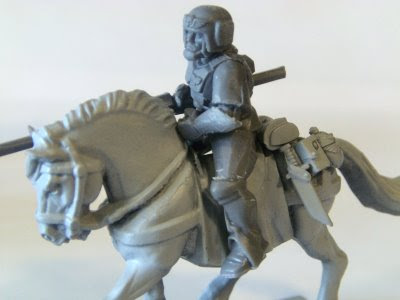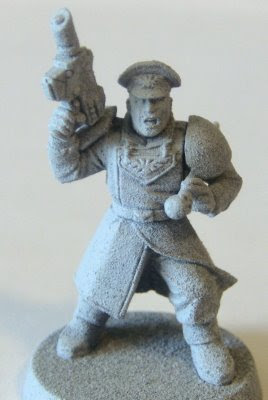These posts will serve as an online reference for the various camouflage paint schemes that I use. While I do not claim to have developed these all by myself, I have tried to present them here as simply and clearly as possible. I remember spending hours searching the Internet for a decent technique or color reference and hopefully this will serve to hasten the efforts of others.
Unless otherwise noted I use Vallejo Model Color almost exclusively for my Imperial Guard.
Copyright note: Unless they are mine, I make no claims of copyright to any pictures or examples, nor is it my intention to do so. They are used here because they represent the best examples I could find of a particular paint or camo style. If a picture belongs to you and you don't want it shown here, I'll take it down...just let me know
SplittermusterThis pattern is usually associated with the German airborne, the Fallschirmjager. I think it works pretty well on GW Steel Legion minis. 
BASE COLOR
ratio 6:3:1 | 819 Iraqi Sand | 986 Deck Tan | 872 Chocolate Brown |
RED BROWN
ratio 7:3 | 846 Mahogany Brown | 872 Chocolate Brown |
|
MEDIUM GREEN
ratio 5:3:2 | 888 Olive Grey | 808 Blue Green | 986 Deck Tan |
I've found that the key to this pattern is to keep the brown and green in geometric shapes. Avoid round edges or clumpiness. Follow up the shapes with small, defined lines of the green. I use the pointed tip of a 20/0 brush for this. Whereas some would stick to putting these lines only over the tan areas, I like to go all the way through with very thin, controlled streaks that run the length of the model. Don't clump the lines too close together, from a distance it will still look cohesive. Remember, you cannot achieve the same detail on these camos as in real life. Shoot for a good, consistent paint job. Below are some very good examples.
Lastly, don't be intimidated by the complexity of these paint schemes. With patience and persistence you will be able to do it.
The war goes on,
Hessler
















































